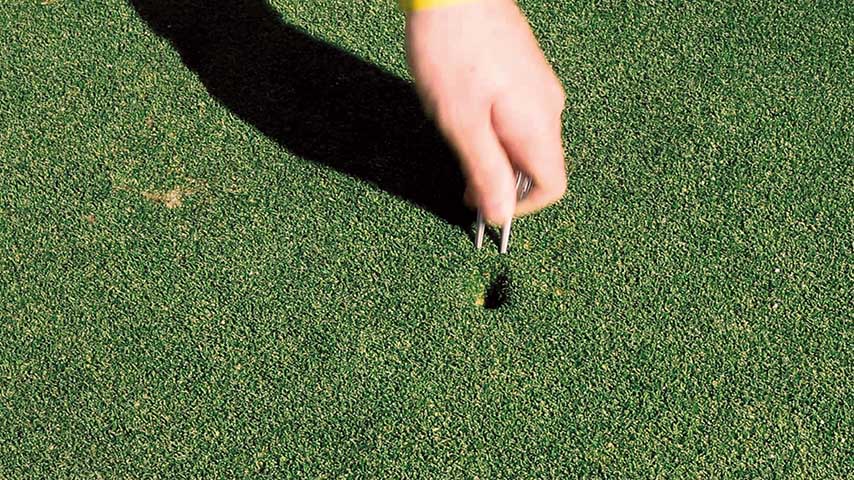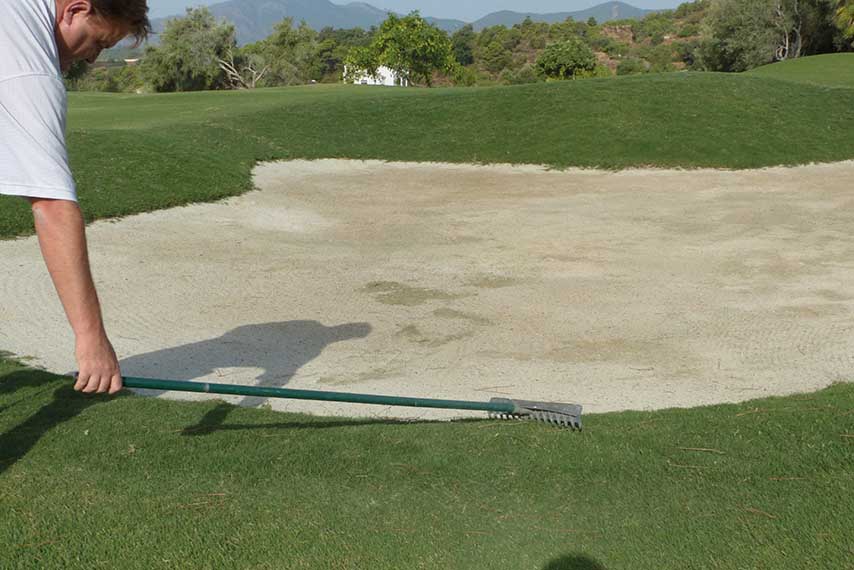Golf courses are not free from the bad habits of players who, most of the time just due to neglect and not with any bad intentions, affect the flow of the game.
In this article, Rod Bastard, director of Marbella Club Golf Resort and a professional with extensive experience as a golf club manager, writes about bad habits by golfers that cause slower play and a resulting inconvenience for all players.
I believe that the rules being introduced next year, Ready Golf, will help a lot to improve the problem of slow play. Playing in the order in which each player is prepared to hit their shot is going to become the rule. However, it is common sense that, if someone is ready, they will play first, regardless of whether they are a little closer to the hole, especially around the green or approaching the green. It is no problem or big deal if a player who is already prepared hits first.
It is also important to prepare for your shot when others are hitting theirs, obviously without disturbing your playing partners. There are many situations in which you can take measurements, do wind calculations and choose your club while others are playing.

Another key to not slowing down the pace of play is to be aware of where the next tee is. In this way, when we arrive at the green we already know where we are going to go for the next hole and therefore we will park the buggy or leave the carts in the right place. When you finish you will not have to return back down the hole you just played, so you will not lose time or affect he group coming up behind.
It is also important in this regard to fill in your results on the next tee, not around the green when you finish that hole. I think we all have sufficient memory to remember our shots over the previous five minutes and write them down on the next tee while our colleagues are teeing off.
One other big, very big, problem that I see is that we do not give way. I do not know why, but we do not let the fastest groups through. It does not mean that you have to give way to everyone but, especially if you have lost a hole ahead, it’s fine to make way for the fastest groups, whether they are the same number of players or, clearly, if they are fewer, because they are going to play faster. I believe that some people take it as being a bit negative to let others play through because they think it means they are bad players, but you have to be supportive and those with a good golfing education will always give way to the fastest. We all want to enjoy our round, but there are some who play faster than others, and letting them through just takes a couple of minutes, no longer.
Another important aspect that helps to avoid, as much as possible, slow play, is to become used to playing a provisional ball off the tee. It is obviously much faster to play a provisional ball - it takes 30 or 40 seconds more - than to go back to the tee when you can’t find your ball, have to hit another one, and leave the group waiting. The provisional ball is a great way to speed up the game, especially on a course that you are not familiar with, because many times we do not know that there are bushes or trees up there.
Then there is the matter of searching for a ball. Next year - it is also in the new rules - the time will be reduced from five to three minutes. Normally when playing, if you do not find the ball in the first minute and a half, you will not find it because it is most likely that you are looking in the wrong place or the ball has taken an odd bounce. I believe that, for the good of all, in social playing situations it is better not to extend the search time if it is not necessary.

Pitch Marks and the Rake
And to conclude… a couple of tips related to repairing pitch marks and using the rake, always taking into account a basic premise for golfers: we must leave the course at least as we found it and, if possible, even better.
We all complain that when we get to the green there are numerous un-repaired pitch marks. I believe we should see these marks as a source of pride, of satisfaction, since we only leave marks when we hit a good shot. So we should be proud to make them - but also to repair them. What we do should look at especially is where the ball was when it hit the green, because it could be that the ball is five or six metres from where it bounced. It is not good enough to go to our ball, place down a marker and that's it. You have to look for where the ball bounced, and it is always good to repair your own pitch mark and one or two more, and thus leave the course in much better condition.

As for the bunkers, players should follow a routine of taking proper care of these sand hazards, and the first thing they have to do when they reach the bunker, regardless of where their ball is, is to pick up the rake straight away and leave it at the entrance to the bunker at the point closest to the ball, which means it will, obviously, be at hand when they finish their shot. If you go directly to the ball, perhaps you have already played it, you are in the middle of the bunker, you see the rake a long way away and you say to yourself, “Well, I’m not going to bother going for it.”




